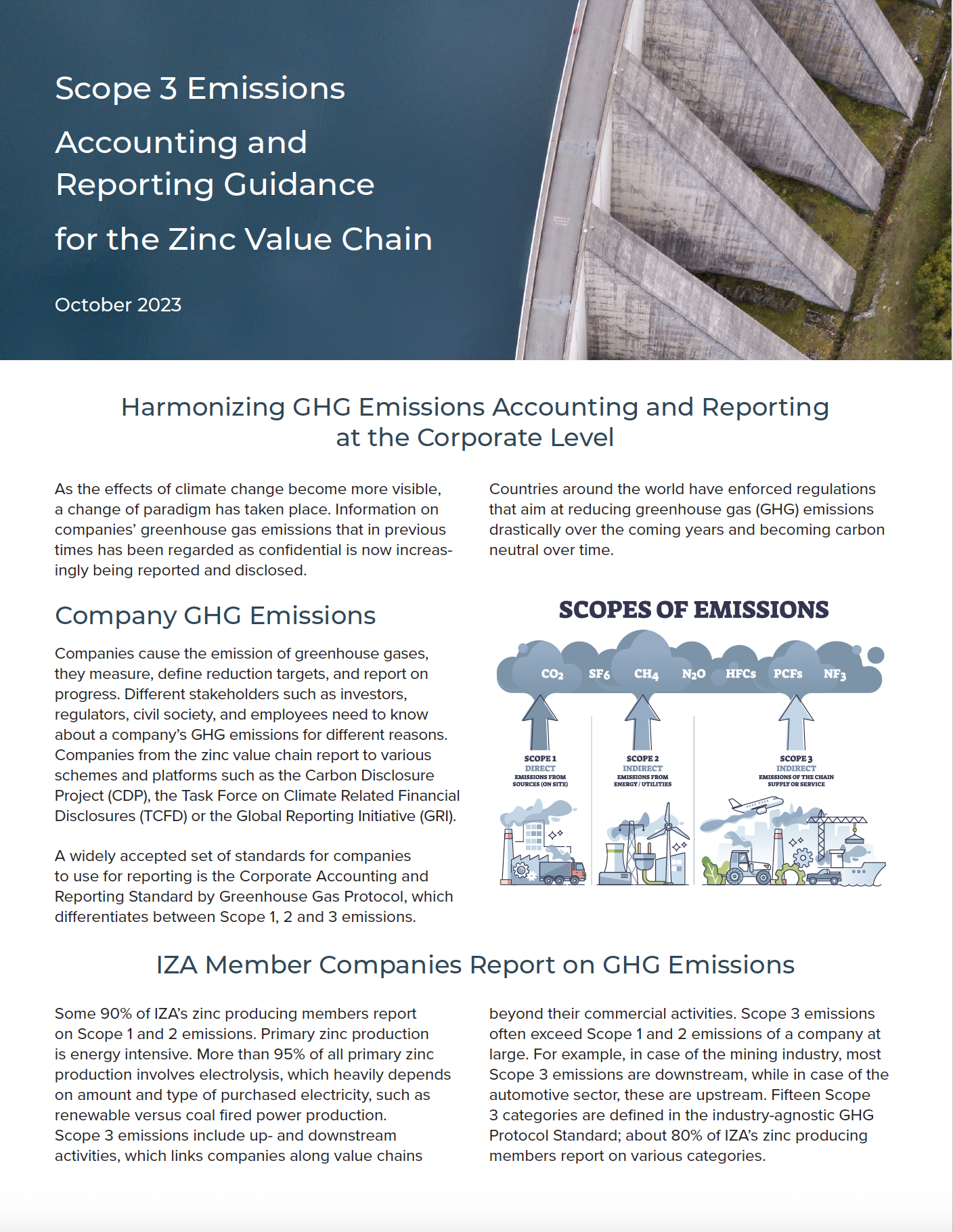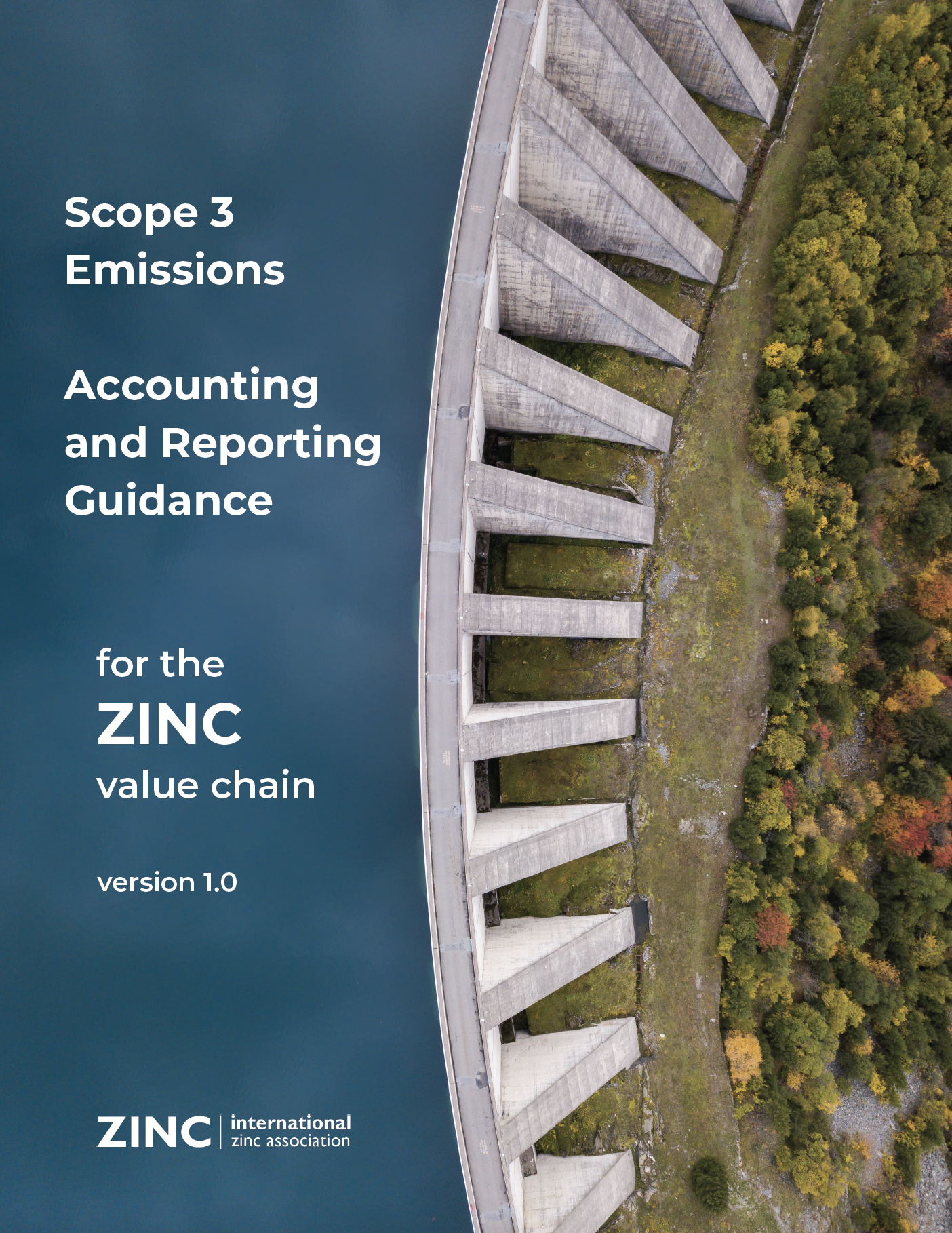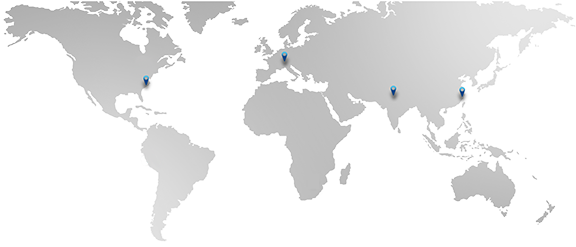Scope 3 Guidance for the Zn Value Chain
INTRODUCTION
Companies cause the emission of greenhouse gases, they measure, define reduction targets, and report on progress. Different stakeholders such as investors, regulators, civil society, and employees need to know about a company’s GHG emissions for different reasons. Companies from the zinc value chain report to various schemes and platforms such as the Carbon Disclosure Project (CDP), the Task Force on Climate Related Financial Disclosures (TCFD) or the Global Reporting Initiative (GRI).
A widely accepted set of standards for companies to use for reporting is the Corporate Accounting and Reporting Standard by Greenhouse Gas Protocol, which differentiates between Scope 1, 2 and 3 emissions. However, the GHG Protocol’s standard still allows for room of interpretation, which leads to uncertainty when looking into specific industry sectors. As a result, reporting companies lack guidance and use different methodologies when reporting on the same Scope 3 categories.
To increase harmonization and transparency, the International Council on Mining and Metals (ICMM) developed the Scope 3 Emissions Accounting and Reporting Guidance for the metals sector. Most parts of the ICMM guidance apply to companies from the zinc value chain. However, Scope 3 categories such as processing, use, and end-of-life recycling of sold goods (categories 10, 11, and 12) are zinc-specific.
To close these remaining gaps, IZA - supported by sustainability consulting and energy management company ENGIE Impact - has developed a zinc-specific Scope 3 guidance which is to be seen in context with the ICMM Guidance and the GHG Protocol’s standard. The IZA Scope 3 guidance will help companies from the whole zinc value chain navigate their way through reporting in a transparent, harmonized, and credible manner and serve as an important step on the way to decarbonizing the zinc industry.


